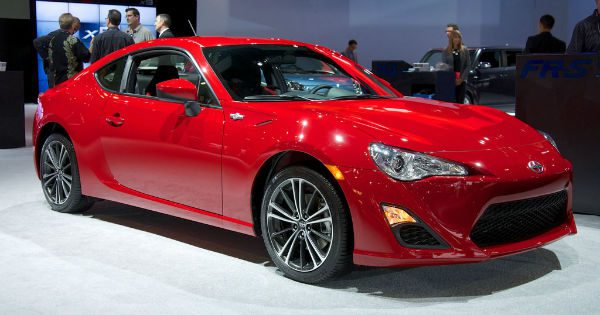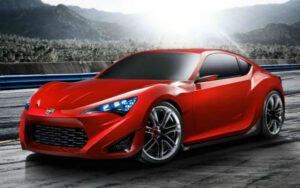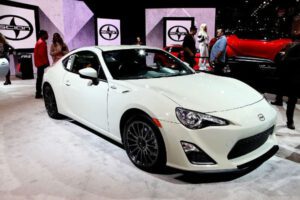2026 Scion FRS
The 2026 Scion FR-S is a rear-wheel drive sports coupe produced by Toyota and Subaru. The 2026 Scion FRS is a lightweight, affordable rear-wheel drive sports coupe known for its good handling, balance, and pure driving experience rather than sheer speed. Developed in partnership with Subaru (which sells a model very similar to the BRZ), it features a 2.0-liter “boxer” four-cylinder engine that produces around 200 horsepower, designed for a low center of gravity and excellent handling. The original FR-S remains a popular choice on the used car market for those looking for an affordable, agile, and easily tuned sports car.
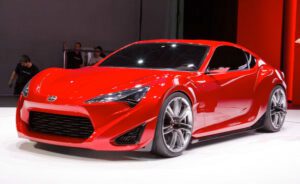 2026 Scion FRS Concept |
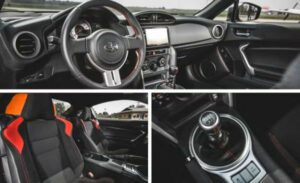 2026 Toyota Scion FRS Interior |
The available FR-S offers a six-speed manual or automatic transmission, the basic feel of the rear end making it a suitable platform for enthusiasts and aftermarket conversions, although its ride is tight and the rear seats are small. After the Scion brand was discontinued, the car continued to be produced under the Toyota brand as the Toyota 86. The original FR-S remains a popular choice in the used car market for those looking for an affordable, fast, and highly customizable sports car.
2026 Scion FRS : Interior
The Scion FR-S’s interior is a small, driver-focused cabin that prioritizes functionality over comfort. Its design is simple and is constructed largely of hard plastic, with a vague feel that emphasizes the “back to basics” nature of the sports car. The cabin is defined by its straightforward design, with low-profile front sport seats, which are heavily padded to hold passengers firmly during hard driving. All controls, including the standard touchscreen gauges and audio system (on later models), are simple and intuitively placed to minimize driver distraction.
While the front seats are supportive and comfortable for most passengers, the rear seats are considered more conventional. Reviewers note that rear legroom is lacking, making it inaccessible for adults and not ideal for children. However, the 2+2 seating configuration, along with the folding rear seat, offers practical versatility by expanding the small 6.9 cubic feet of trunk space to accommodate additional cargo. This allows for plenty of room to carry larger items, such as a set of tires for day-long runs.
2026 Scion FRS : Engine
The Scion FR-S is powered by a 2.0-liter naturally aspirated four-cylinder “boxer” engine, the result of a joint development effort between Toyota and Subaru. Subaru provided the engine’s flat-four, inverted layout, which contributes to a low center of gravity and good handling dynamics. Toyota’s contribution was the D-4S fuel injection system, which uniquely combines direct injection with traditional port injection. This setup helps improve efficiency, allowing the engine to produce 200 horsepower and 151 lb-ft of torque.
The FR-S engine is known more for its high-revving nature than its direct power. The engine delivers consistent power delivery throughout the rev range, which, combined with the car’s light and balanced chassis, creates an engaging and responsive driving experience. However, a common criticism of the engine was its notable lack of low-end torque, which disappointed some drivers. This aspect reflects the FR-S’s philosophy as a driver’s car that focuses on warmth and handling rather than outright speed.
2026 Scion FRS : Safety
The Scion FR-S is equipped with a strong set of standard safety features, earning good marks in crash tests from the National Highway Traffic Safety Administration (NHTSA) and the Insurance Institute for Highway Safety (IIHS). It has six airbags in total, including dual-stage front airbags, front seat-mounted side airbags, and side curtain airbags that provide protection for all occupants. The vehicle also features Toyota’s Star Safety System, which includes electronic stability control, traction control, anti-lock brakes, brake assist, and electronic brake-force distribution to help prevent accidents. While it lacks advanced modern driver assistance systems such as blind spot monitoring, its structural integrity has earned good marks, including a five-star overall safety rating from the NHTSA and a “Top Safety Pick” designation from the IIHS for its first model year.
